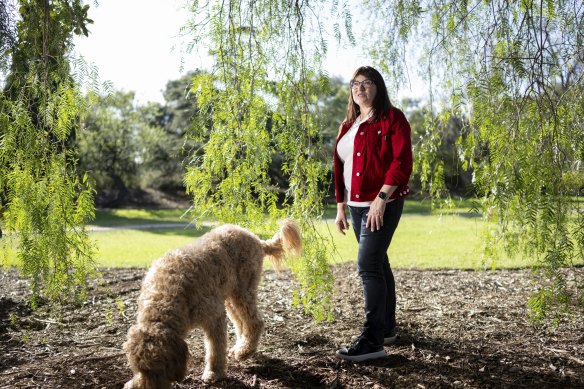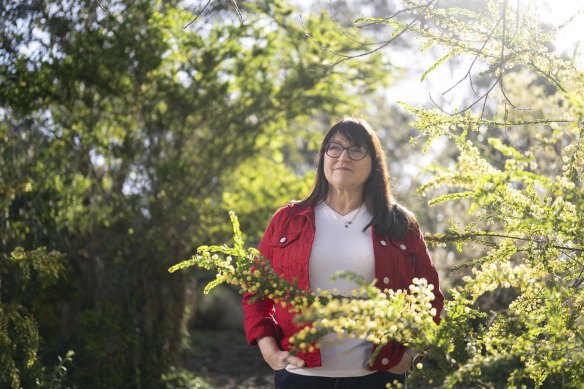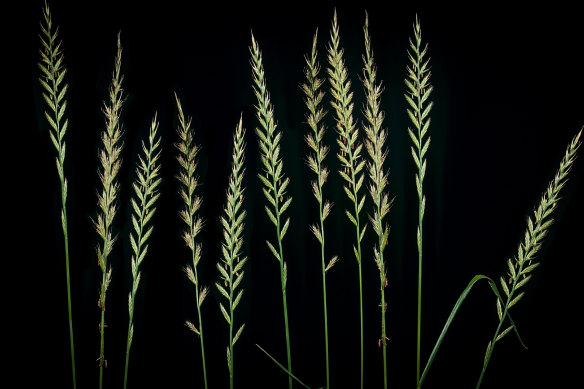This was published 9 months ago
Polly never suffered from asthma – then a clap of thunder left her gasping for air
Polly Harvey was in her late 40s and had never experienced asthma or hay fever.
But during Melbourne’s catastrophic asthma thunderstorm in 2016, there was an almighty roar of thunder – and suddenly Harvey was on the ground and having trouble breathing.

Polly Harvey with her dog Milo. The Melbourne chef was diagnosed with adult-onset asthma. Credit: Penny Stephens
“At first, I felt like I was getting a migraine,” the Melbourne chef said. “But then I heard this enormous clap of thunder... I fell back on my back, I had my hand on my chest.”
Luckily, Harvey was at her daughter’s swimming lesson – with a nurse close by.
But a few years later, it happened again, during another asthma thunderstorm – this time she ended up in hospital.
Soon after, she was diagnosed with adult-onset asthma and has since developed severe hay fever, too.
In welcome news for Harvey and thousands of other Victorians, preliminary forecasts for spring and summer predict a less intense and shorter pollen season in Victoria off the back of dry conditions and below-average rain.
But experts warn the intensity of hay fever and heightened danger of seasonal or thunderstorm asthma still hinges on how much rainfall is reported across the state over the next few weeks.
Melbourne Pollen’s Dr Edwin Lampugnani said the soils of western Victoria’s grazing lands were more parched than usual. These dry conditions mean below-average soil moisture and reduced grass growth – a crucial determinant of pollen production
“It could be a delayed and less intense pollen season that ends earlier this year,” said Lampugnani, a clinical Fellow at the School of Health Sciences at University of Melbourne’s school of biosciences.
“However, this is very much dependent on whether there are favourable conditions through September and in late August.”
Lampugnani said while it was too early to make an ironclad prediction about the impending pollen season, Victoria had reported its lowest autumn rainfall since 2008.
Just under 90 millimetres fell this year, 45 per cent below the 1961-1990 average and the ninth-lowest autumn rainfall year on record.
Unless there is a huge deluge in the next few weeks, the pollen season looked set to be less intense than average, Lampugnani said.
Melbourne’s first high grass-pollen day usually falls in October each year, triggering days of runny noses, itchy eyes and incessant sneezing for hay fever sufferers.
About one in five Australians experience hay fever. It’s caused by airborne particles triggering an allergic reaction in the body – and pollen released from flowering plants and grasses is a major culprit.
Lampugnani oversees the Melbourne Pollen website and app, which gives daily pollen counts, information, forecasts and warnings for people at high risk.
Harvey, 56, said the app helped her to determine when to take extra precautions, such as avoiding outdoor sports.

Polly HarveyCredit: Penny Stephens
She also controls her symptoms with a daily routine of nasal spray, her inhaler and a turbuhaler, which has a fixed-dose of preventive asthma medication.
“Cold air, dry air, it really doesn’t matter – as soon as that pollen is out, I’m affected,” the Port Melbourne resident said.
“I started becoming allergic to grass, then certain plants, now it’s everything and I’ve got full-blown hay fever too.”
National Asthma Council director Professor Peter Wark said the state was entering a peak risk period for thunderstorm asthma, which occurs when pollen grains explode after absorbing moisture in the air, allowing the smaller particles to be breathed deep into people’s lungs.
Melbourne experienced the world’s worst recorded asthma thunderstorm in 2016. Ten people died and about 14,000 people were taken to hospital.
The phenomenon was caused by a combination of high pollen, strong winds, high temperatures and air moisture before a cold front, sparked an unforeseen surge of emergency calls.
While asthma thunderstorms are rare, Wark said conditions can still change rapidly during the warmer months.
About one in every nine Australians have asthma and some 80 per cent of them also experience hay fever.

Rye grass pollen was the key allergen in Melbourne’s 2016 thunderstorm asthma event.Credit: Alamy
Wark said the best defence for Victorians with seasonal hay fever or asthma was day-to-day control.
“That could be either using a regular preventer that they take all the time, or a preventer that is both what we call, an anti-inflammatory and reliever medication,” the respiratory physician said.
“If their asthma is well controlled, it is very likely that they’re going to be protected, at least as much as they can be, against thunderstorm asthma.”
Wark urged anyone experiencing symptoms including chest tightness, shortness of breath and wheezing to consult their GP.
Victorians can also access thunderstorm asthma forecasts through the VicEmergency app or check the pollen count for high-risk days online at Melbourne Pollen or via the app.
Get the day’s breaking news, entertainment ideas and a long read to enjoy. Sign up to receive our Evening Edition newsletter.